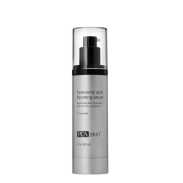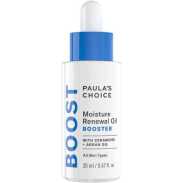Comparison between PCA SKIN Hyaluronic Acid Boosting Serum vs. Paula's Choice Paulas Choice Resist Moisture Renewal Oil Booster
- 41 components -
- 11 components -
Find out which product is better for your skin.
Ingredients in both products 1
Components only in PCA SKIN Hyaluronic Acid Boosting Serum 40
Uniqueness: 97.6%
Components only in Paula's Choice Paulas Choice Resist Moisture Renewal Oil Booster 10
Simmondsia Chinensis (Jojoba), Carthamus Tinctorius (Safflower) Seed Oil (Non-Fragrant Antioxidant Plant Oil/Skin-Repairing Ingredient), Prunus Armeniaca (Apricot) Juice, Helianthus Annuus (Sunflower) Seed Oil Unsaponifiables, Vaccinium Macrocarpon (Cranberry) Seed Oil (Non-Fragrant Antioxidant Plant Oil/Skin-Repairing Ingredient) and 5 more. Show all.
Uniqueness: 90.9%
Face to Face
Components position by position
1
Water
1
Simmondsia Chinensis (Jojoba)
2
Propanediol
2
Carthamus Tinctorius (Safflower) Seed Oil (Non-Fragrant Antioxidant Plant Oil/Skin-Repairing Ingredient)
3
Glycerin
3
Prunus Armeniaca (Apricot) Juice
4
Niacinamide
4
Helianthus Annuus (Sunflower) Seed Oil Unsaponifiables
5
Dimethicone
5
Vaccinium Macrocarpon (Cranberry) Seed Oil (Non-Fragrant Antioxidant Plant Oil/Skin-Repairing Ingredient)
6
Hydrolyzed Yeast Extract
6
Argania Spinosa (Argan) Kernel Oil
7
Polyglyceryl-3 Beeswax
7
Borago Officinalis (Borage) Extract
8
Coconut Alkanes
8
Oenothera Biennis (Evening Primrose)
Show others
Positive Effects
Find out what good effects the product has
Both products provide the following effects: Antioxidant, Moisturizing, Acne fighting, Softening, Soothing, Anti-aging, Elasticity improvement, Rejuvenation, Tones up skin, Regeneration, Protection
Effects unique for Hyaluronic Acid Boosting Serum:
Cleansing, Pore Shrinking, Lightening, Lifting, Antifungal, Antiseptic, Deodorant, Hair conditioning, Hair structure improvement, Hair glossEffects unique for Paulas Choice Resist Moisture Renewal Oil Booster:
Healing, Nutrifying, Hair strengthening, Hair follicle nutrition-- Show more --
ECO Metrics
Find out how eco-friendly the components are
Vegan
No
No
Cruelty free
No
Yes
Reef safe
Yes
Yes
Ozone layer safe
Yes
Yes
Organic score
natural
7 out of 41
17%
chemical
25 out of 41
61%
natural
6 out of 11
55%
chemical
2 out of 11
18%
Concerns
Pay attention to this information
-- Extra information --
Components by Skin Type
Find out what components are good or bad for your skin type
Dry skin
Positive: 2Negative: 0
Glycerin#3Sodium Hyaluronate#14
Oily skin
Positive: 0Negative: 1
Coconut Alkanes#8
Sensitive skin
Positive: 0Negative: 1
Rosmarinus Officinalis (Rosemary) Leaf Oil#29
Dry skin
Positive: 0Negative: 0
Oily skin
Positive: 0Negative: 0
Sensitive skin
Positive: 0Negative: 0

